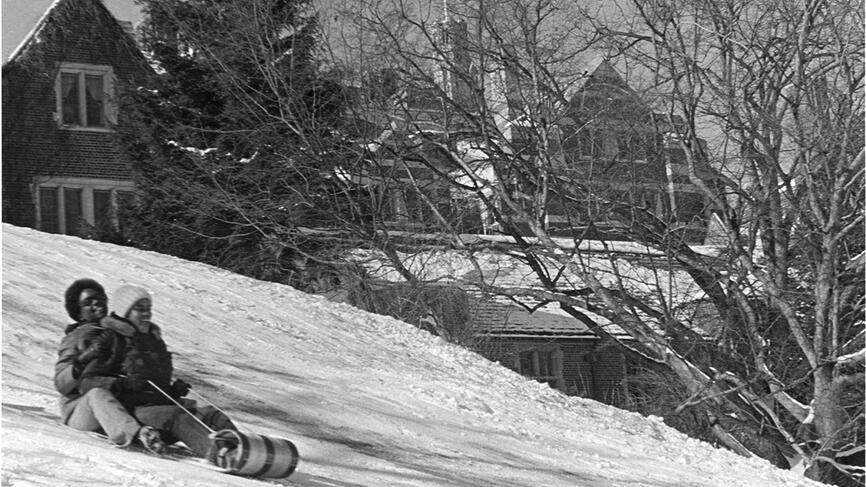Eight Great Wellesley Traditions
Wellesley’s traditions help bond and unite Wellesley women, shaping their common identity, spirit, and pride. To help welcome the class of 2021, we’re sharing eight of our favorite Wellesley traditions.

Dating back to 1895, Hooprolling involves racing while pushing wooden hoops. The winner is thrown into Lake Waban, and is said to be the first to achieve success as she defines it.

Every fall, Wellesley’s sophomore class community plants a tree during Friends and Family Weekend. The tradition, which dates back to 1879, includes the passing of a ceremonial spade from one class to another.

Wellesley’s snowy winters lend themselves to “traying”—using a dining hall tray as a makeshift sled—to speed down Severance Hill. The tradition dates to at least the 1920s. Today, in an effort to reduce water usage, Wellesley’s dining halls no longer use trays, so students use actual sleds or other items to continue the “traying” tradition.

Dating back to 1875, Flower Sunday is the oldest tradition at Wellesley. Each fall, all entering students are matched with a Wellesley big sister. On Flower Sunday, first-year students receive flowers as part of an official welcome into the Wellesley community. They also meet their big sisters, and together they attend a multifaith program in the flower-filled Houghton Chapel and Multifaith Center.

During the first Boston Marathon, Wellesley students reportedly cheered on a particular favorite (a Harvard student), thus setting a precedent for vociferous support for the runners. That support continued every year, and soon became a tradition, now known as the Scream Tunnel. The ritual gained momentum in the 1970s, when women were at last allowed to officially run the race.

With the dedication of Houghton Memorial Chapel in 1899, students began to assemble on the chapel steps to sing, and a new tradition was born.
Today, two Stepsinging events are held each academic year. One is held in the fall in Diana Chapman Walsh Alumnae Hall. The other is held on the last day of classes in the spring, when students gather on the chapel steps, with a champagne toast to seniors. (Alumnae also participate in Stepsinging during reunion.)
The Alumnae Association provides traditional songbooks, and students assemble by class to try to out-sing and out-cheer the other classes.

Wellesley has a long history of assigning a color to each incoming class, and for the last 50 years, the classes have rotated through the four-color spectrum of red, yellow, green, and purple. When the tradition began in 1879, blue was one of the four class colors, but in 1953 blue became the college color, so green was added in its place.

Peppermint Stick Pie and Wellesley Fudge Cake, each with its own storied (and delicious!) past, have delighted generations of Wellesley women.



